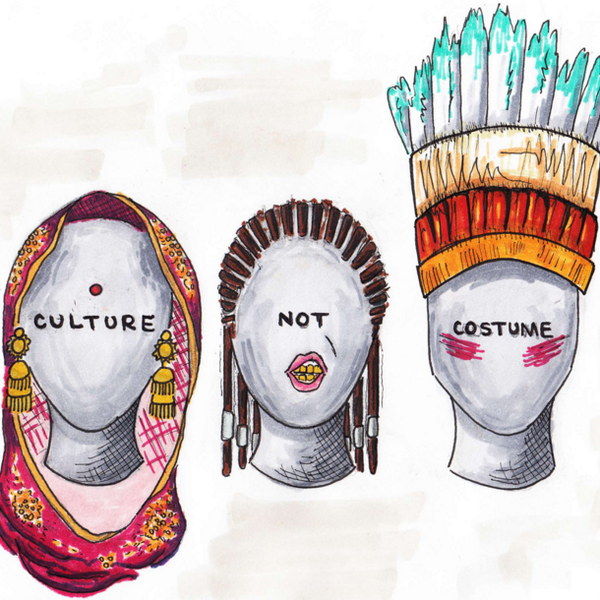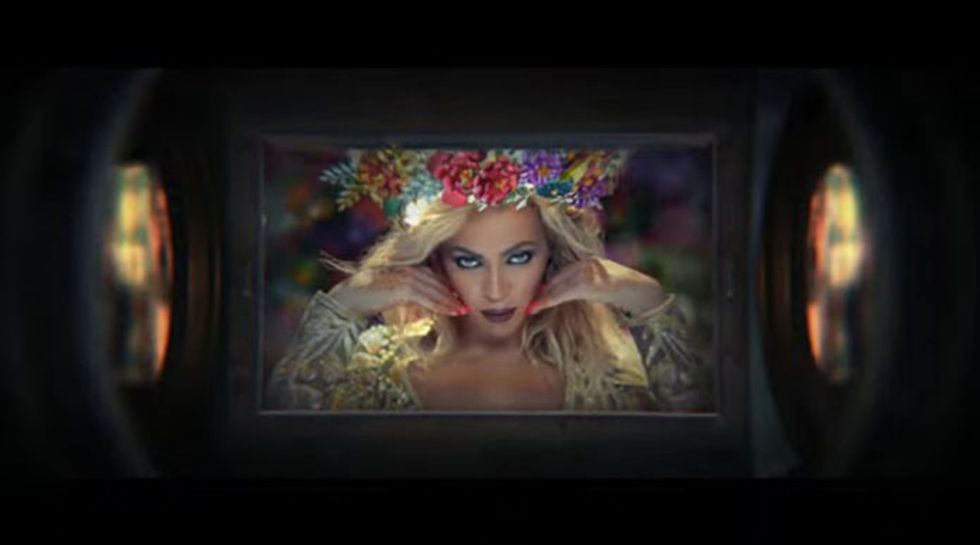There’s nothing wrong with embracing a culture by wearing traditional clothes while paying homage to the culture itself. However, there is a fine line between embracing a culture and cultural appropriation.
Cultural appropriation is defined as the adoption of a different culture other than the one an individual self identifies with. When people adopt to other cultures, or in other words, pretend to be a member of a society that they have no connection to, it is the equivalent of pretending to understand the struggles of those who are already strongly ingrained into that culture.
One should not establish an identity for oneself based on a prejudice. For example, as an Asian-American citizen and a Bangladeshi-Indian, I should not decide to start wearing feathers on my head--trying to resemble people of "Native American" tribes based on the images that my US History textbook uses. But, in "Hymn for A Weekend," there are several instances of cultural appropriation.
Imagery
We have seen this in Katy Perry's "Dark Horse" depicting Egypt, and now we see it again. Not only is the video “Hymn for a Weekend” culturally appropriating, it is also only depicting a side of India that people have already seen. In the video we see innocent kids on dirt paved roads running down the street to see their favorite band.
Yes, there are people dressed in Ganesh costumes, rivers for kids to leap into, religious garb -- and, yes, there are even snake charmers (guess they forgot to add that). These things are unique to Indian culture, but there’s much more to India than that particular inner-city image.There are Gujratis, Punjabis, Parsis, Muslims, Hindus, Christians, villagers, city dwellers, mountainers, rich, poor, etc. Indians are not homogeneous. Stop exotifying India!
Prejudice
Perhaps the only Indian movie that a Westerner with non-Indian heritage has seen is “Slumdog Millionaire.” A Westerner cannot assume they know everything about Indian culture based upon “an Oscar nominated film” -- which, by the way, is a British film. These films cater to a Western audience that assumes all Indians are impoverished and owe it to their colonists for “improving their land.”
Western Dominance
It is evident that several English songs play on Indian television and radio stations, and people are told to take pride in the fact that they can speak “proper English.” But, when was the last time that a Bollywood (Indian made) song has appeared in American television? When we place artists like Beyonce on pedestals and have them “pretend to be Bollywood actresses,” we are only contributing to the idea of Western dominance. Yes, there is Western dominance -- Western supremacy -- worldwide. Even in the field of music in India.
If Beyonce had simply been strolling down the streets of India wearing traditional garb there would be no problem. However, she is wearing a large silver headpiece that dangles down her head while people are crowding the movie theatre to see her film. Firstly, this head jewelry is not common, and secondly, the actress’ hand movements and gestures are inaccurate. When there are several people to play a part, why use others? Rather than casting Sonam Kapoor as the main actress in this music video (who is actually a Bollywood actress) Beyonce was cast.
What I would have loved to see in the video:
- The singers allowing Indians to take their usual roles
- The singers not using their power to profit off of someone else's culture
- More Indian influences in terms of singing style and instrumental (raga for example) to actually expose people to Indian music
- Having the location of the video shot in several places so we could get a sense of different parts of India (like a beach-side, a hill station, and etc).

























